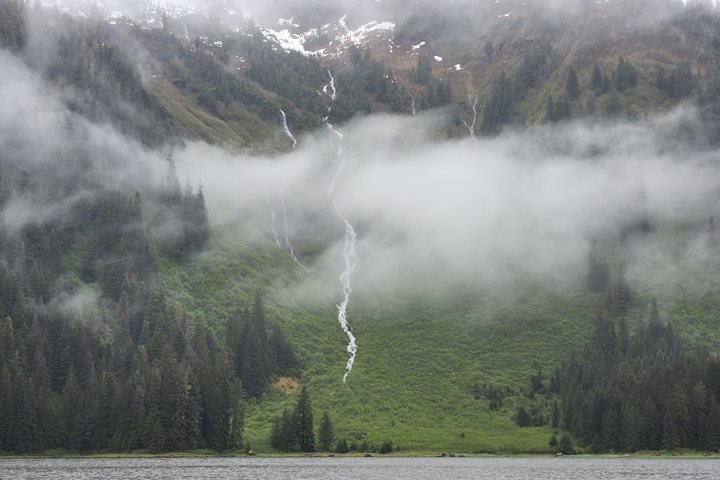The third full day of our journey in Southeast Alaska started a bit earlier than usual, but in a grand way. After having entered Glacier Bay National Park at midnight and traveled to the bay's northernmost reaches during the night, National Geographic Quest arrived at Margerie Glacier shortly after sunrise. We early risers, coffee cup in hand, found an impressive view off the bow: a magnificent tidewater glacier in all its splendor. Next to it, the Grand Pacific Glacier, the very same one that completely filled the bay when George Vancouver sailed in Icy Strait in the late 1700s. We learned how its dramatic retreat freed the landscape of ice and that its now a living laboratory that teaches us about the rebounding of live and resilience.
South of Margerie we entered a narrow channel known as Russell Cut where we had a couple of marvelous sightings. First, we saw a brown bear with not one or two, but three second-year cubs! They were foraging in the intertidal area and we had an excellent chance to watch them before they walked back into the bushes. Then our luck really hit a great high when we spotted three wolves. Two adults and a cub, possibly a family group; we watched them for a long time as they played with (of all things) a blue frisbee! The cub ran all over the place with the frisbee in its mouth while the adults chased him. What a wonderful intimate view of the family life of such magnificent predators!
Later, National Geographic Quest ventured into John Hopkins Inlet, where the tidewater glacier of the same name regaled us with some more dramatic and awe-inspiring vistas. Close to John Hopkins Glacier a great number of harbor seals rested on ice floes, many of them glancing at us with curiosity as we slowly made our way around.
After lunch we had some more great wildlife encounters, starting with several groups of mountain goats that quietly rested on the bare rocks of the appropriately-named Gloomy Knob. Then we discovered another brown bear sow with her three cubs of the year, followed by a single brown bear that allowed us to get a very close view of its barnacle-feeding technique. As we continued heading south we stopped at South Marble Island, which is an important nesting place for a variety of sea birds, including black-legged kittiwakes, common murres, and tufted puffins. A big number of Steller sea lions rested on the low rocks at bod ends of the island and made for the perfect ending of an amazing day of wildlife sightings in Glacier Bay National Park.







